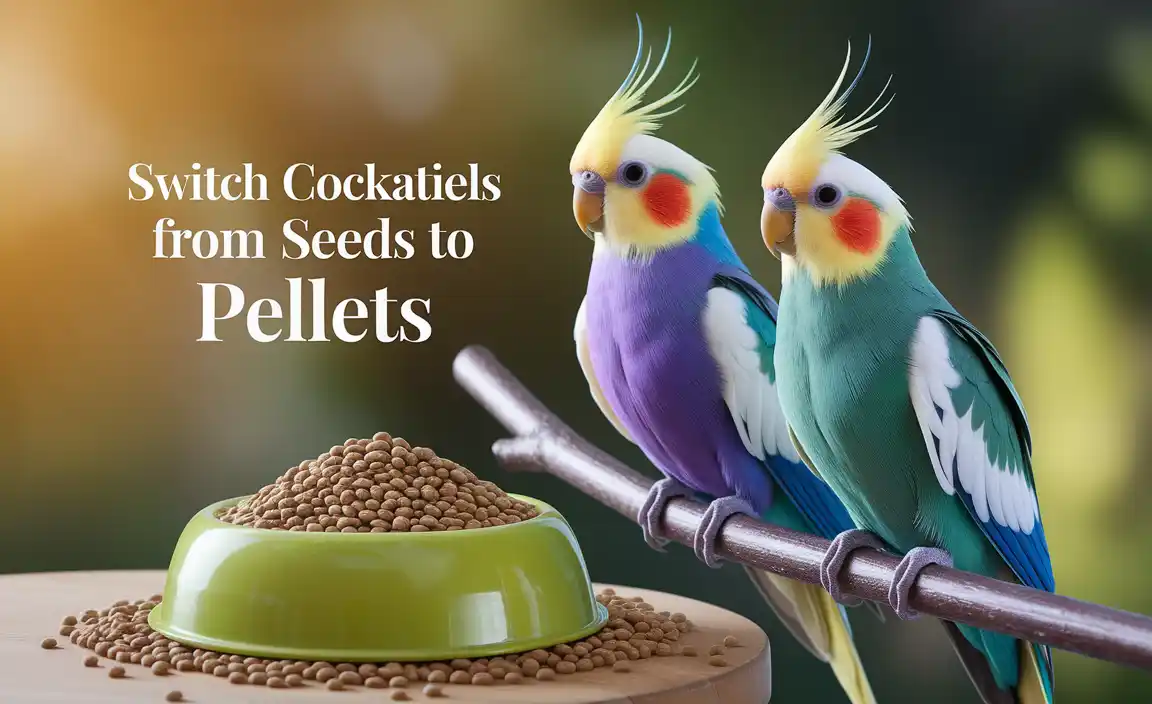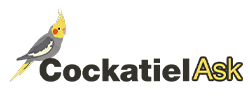
Effective Ways To Switch Cockatiels From Seeds To Pellets
Switching cockatiels from seeds to pellets can be like changing a child’s favorite snack. Did you know that this shift boosts their health by providing balanced nutrition? Start by mixing pellets with seeds. Gradually increase the pellet amount while reducing seeds over weeks. Play with them to make it fun! Cockatiels have unique tastes, so patience is key. With love and time, even the pickiest bird will enjoy their new diet!
Understanding the Nutritional Benefits of Pellets
Comparison between seed and pellet nutrition. Long-term health benefits of pellets.
Pellets offer more balanced nutrition for cockatiels compared to seeds. While seeds are tasty, they often lack essential vitamins. Pellets are packed with nutrients needed for your bird’s health. They ensure a consistent and complete diet. Think of pellets as a vital dinner. Birds eating pellets live longer and feel better.
- Seeds lack key nutrients.
- Pellets provide balanced meals.
- Pellets improve long-term health.
Why should cockatiels eat pellets instead of seeds?
Cockatiels thrive on pellets because pellets offer consistent nutrition. Seeds can lead to vitamin shortages. Pellets are better as they help keep your bird healthy.
Choosing the Right Type of Pellets
Recommendations for high-quality pellet brands. How to read and understand pellet packaging labels.
Finding the perfect pellet for your cockatiel is like finding the best pizza topping. There are many choices, but only some are tasty and healthy. Look for pellet brands like Roudybush, Harrisons, and ZuPreem. They have ingredients that are good for your bird. When you read the labels, check for vitamins and no artificial colors. Birds need love, and this means feeding them right!
| Brand | Benefits |
|---|---|
| Roudybush | No artificial colors, balanced nutrition |
| Harrisons | Organic, complete diet |
| ZuPreem | Variety in flavors, supports gut health |
Always look at the back of the package. Labels are like secret codes. If it says “fortified,” it means extra vitamins. And remember, a happy bird makes a happy home. As one famous bird expert puts it, “Eat like a bird, if you’re a bird!” That’s some “feather-ful” advice.
Preparing for the Transition from Seeds to Pellets
Steps to gradually introduce pellets into their diet. Creating a feeding schedule to mimic natural eating habits.
Cockatiels are picky eaters, so changing their diet can be like solving a fun puzzle. Begin by mixing a few pellets with their usual seeds. Increase pellet amounts each day. Observe them as they explore their new food. Keep doing this until pellets outnumber seeds. Next, create a feeding schedule. Cockatiels eat every few hours. Offer fresh pellets and water daily. Monitor their habits. Soon, they’ll eat pellets happily!
What if my cockatiel refuses pellets?
If your cockatiel refuses pellets, don’t worry! It takes time and patience. Try different pellet brands or flavors. Mix them with seeds and reward them when they try. Keep offering pellets daily. Eventually, most birds adjust.
Find a Suitable Pellet Brand
- Check for high-quality ingredients.
- Avoid artificial colors or flavors.
- Look for vitamins and minerals.
Techniques for Encouraging Pellet Acceptance
Incorporating behavioral enrichment to stimulate interest in pellets. Mixing strategies: Combining seeds with pellets effectively.
Picky eater alert! Cockatiels can sometimes be stubborn when switching from seeds to pellets, but don’t worry, creativity can help. Make mealtime a fun adventure by adding behavioral enrichment. Hang a colorful foraging toy with hidden pellets inside. Your bird will peck around like a treasure hunt!
Another trick? Combine seeds with pellets in clever ways. Gradually reduce the seeds over time. You can laugh a little, calling them “Pellet Smugglers!” Soon, your bird might wonder, “Where did my seeds go?”
| Cockatiel Transition Tips |
|---|
| Foraging toys with pellets |
| Mix seeds and pellets, reducing seeds slowly |
| Offer pellets as treats |
Remember, patience is key. Give your cockatiel time to adjust, and soon it’ll be squawking, “Pellets are yummy!”
Monitoring Your Cockatiel’s Health During the Transition
Signs of successful dietary adaptation. Recognizing signs of nutritional deficiency or dietary rejection.
As your cockatiel begins its adventure from seeds to pellets, it’s important to keep an eye on their health. A happy bird might sing or chirp and eat well. These are signs they like their new diet! But, if they look sad, their feathers are dull, or they’re losing weight, they could be missing important nutrients. It might be time to play detective!
| Signs of Success | Signs of Concern |
|---|---|
| Chirping and active | Dull feathers |
| Steady weight | Weight loss |
| Bright eyes | Lack of appetite |
If your feathered friend starts playing “peek-a-boo” with their food, it’s a hint to check their diet! If they seem off or reject the pellets, you might want to try different brands or flavors. Remember, patience is key, and soon your cockatiel might prefer their new tasty diet over seeds!
Addressing Common Challenges in Dietary Transitions
Solutions for picky eaters or resistant behaviors. Adjusting the process based on individual cockatiel responses.
Turning your feathered friend into a healthy eater can feel like trying to convince a kid that broccoli is candy! Many cockatiels are picky eaters, clinging to seeds like their life depends on it. Start slowly: mix pellets with seeds, gradually increasing the pellet ratio. Observe their behavior, as each bird is unique. Some might need encouragement—try playing “Who Can Resist the Pellet?” Believe it or not, patience is key in this culinary adventure!
| Challenge | Solution |
|---|---|
| Picky Eaters | Gradual Mix |
| Behavior Resistance | Encouragement and Patience |
| Individual Response | Observe and Adjust |
Maintaining a Balanced Diet Post-Transition
Periodic health checks and vet consultations. Supplementing pellets with fresh fruits and vegetables.
After your cockatiel masters the art of nibbling pellets, it’s time for the next step: balancing their diet. A happy bird is a healthy bird, and regular vet visits ensure they’re chirpy. Schedule periodic health checks and seek vet consultations at least twice a year. In addition to pellets, toss in some fresh fruits and colorful veggies. Think carrots, apples, and leafy greens! Remember, variety is the spice of life—even for birds. But avoid the temptation to spoil them with seeds; we want them to eat their fruits and veggies too!
Here’s a simple guide for a balanced diet:
| Food Type | Percentage |
|---|---|
| Pellets | 60% |
| Fruits and Vegetables | 30% |
| Seeds | 10% |
Remember, transforming into a pellet lover is quite like us discovering a fondness for salads! Ensure your feathered friend gets the right nutrients to keep them singing sweet tunes.
Conclusion
Switching cockatiels from seeds to pellets takes patience. Start with mixing pellets into their seeds. Gradually increase pellet amounts. Offer treats during transition. Observe their eating habits closely. If needed, consult a vet. Keep learning to ensure your bird’s health stays strong. Reading more about bird nutrition helps you make informed decisions.
FAQs
What Are The Benefits Of Switching Cockatiels From A Seed-Based Diet To Pellets?
Switching cockatiels from seeds to pellets is better for their health. Pellets give them balanced nutrition, which means they get all the vitamins they need to stay healthy. Seeds can make them fat and sick, but pellets help them keep a good weight. Also, eating pellets helps keep their beaks strong and sharp!
How Can I Gradually Transition My Cockatiel From Seeds To Pellets Without Causing Stress?
First, mix a small amount of pellets with your cockatiel’s seeds. Slowly add more pellets each day. Watch to make sure your bird eats the new food. Try offering pellets as a treat or mixing them with something tasty. Be patient, as it might take some time for your cockatiel to adjust.
What Types Of Pellets Are Best Suited For Cockatiels, And How Can I Choose The Right One?
Cockatiels need pellets made just for them with balanced nutrients. Always check the package for words like “cockatiel” or “small bird.” Choose pellets with natural colors, not bright ones, and check for important ingredients like vitamins, minerals, and no added sugars. If you are unsure, ask a grown-up to help you find a good brand.
How Long Does It Typically Take For A Cockatiel To Adjust To Pellets, And What Signs Indicate Successful Adaptation?
It usually takes a few weeks for a cockatiel to get used to eating pellets. You will know it’s working when your bird happily eats them without fuss. Watch for changes in the bird’s droppings, as healthy droppings mean it is eating well. Keep an eye on your cockatiel’s behavior; if it’s happy and active, the change is going well.
What Should I Do If My Cockatiel Refuses To Eat Pellets Despite Several Attempts?
If your cockatiel won’t eat pellets, try mixing them with their favorite seeds. Slowly add more pellets each day. You can also soak the pellets in water or juice to make them softer and tastier. Be patient and keep trying different ways to introduce pellets. Eventually, your bird may be curious and give them a try.
